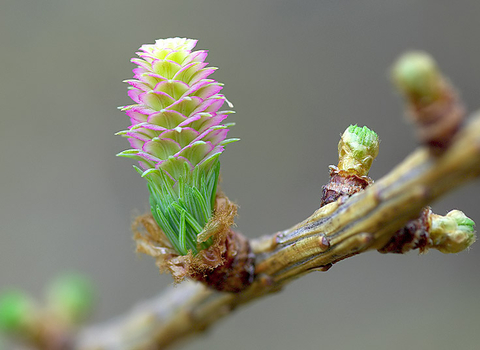
©northeastwildlife.co.uk
European larch
The European larch was introduced into the UK from Central Europe in the 17th century. Unusually for a conifer, it is deciduous and displays small, greeny-red cones on brittle twigs.
Scientific name
Larix deciduaWhen to see
January to DecemberSpecies information
Category
Statistics
Height: up to 35mIntroduced, non-native species.
